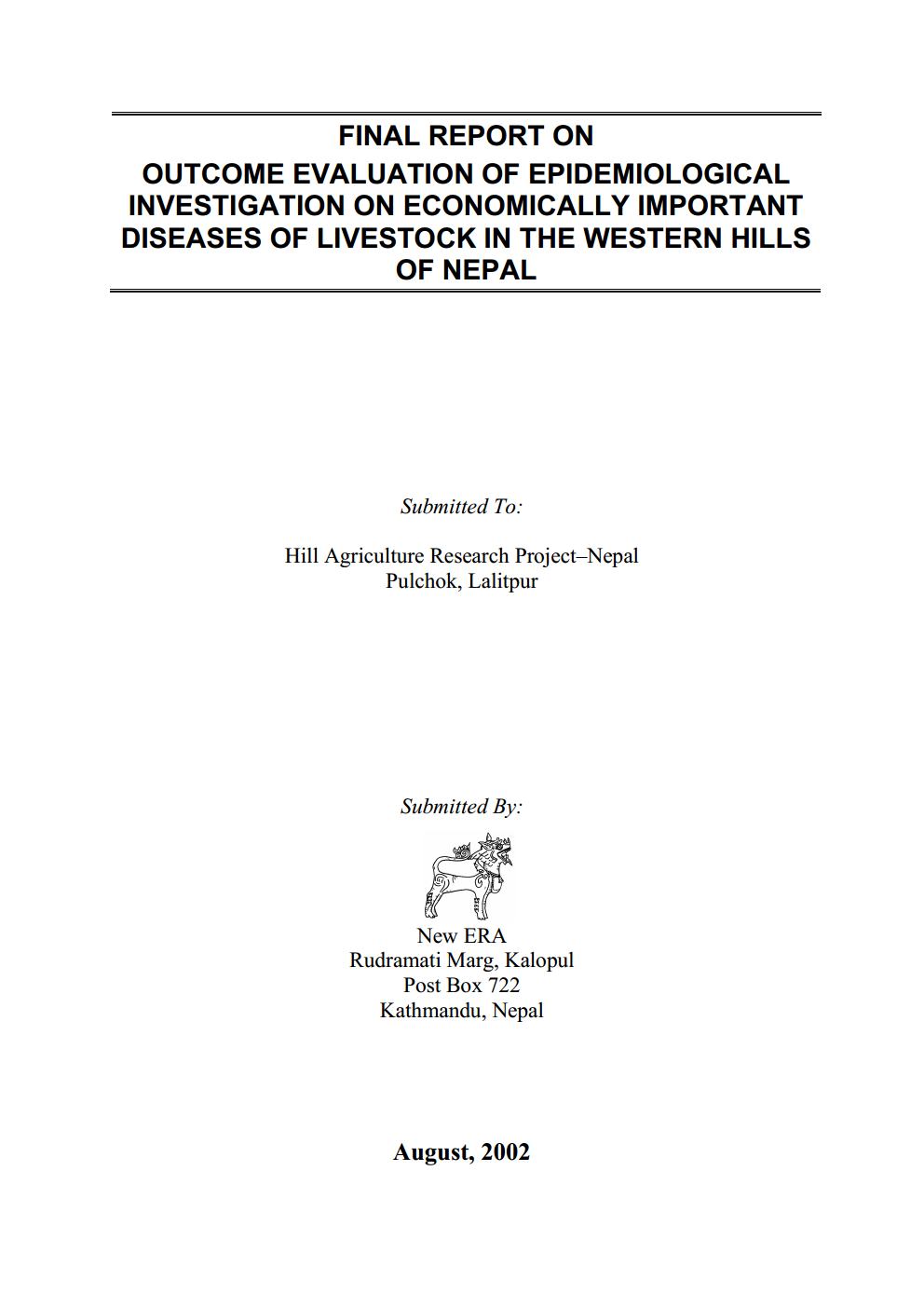This study identifies ways in which the livelihoods of landless and refugee-affected people in Nepal and
Bangladesh can be improved by keeping livestock. To gather information and identify more productive livestock
keeping techniques, the study used three approaches: consultation with the landless poor on their aspirations
and constraints; examination of the approaches and impact of livestock projects designed for the landless; and
evaluation of potential models and research findings by landless people. (Click for full document)
Report Type: Livestock
Increasing Contribution that Goats Make to the Livelihoods of Resource Poor Livestock Keepers in the Himalayan Forest Region
About 47 percent of Nepalese people live below the poverty line and 85 percent of these people keep goats.
Income from goat rearing contributes up to 50 percent of the livelihood of resource poor livestock keepers
(RPLK). Landless and nearly landless people often have 5 to 6 goats that act as a safely net when other sources
of income fail. This safety net is most useful at the end of the dry season and beginning of the monsoon.
However, there is also an increased risk of disease and death of goats at this time. Disease can force farmers to
sell goats at a lower price. This study identifies the cause(s) of such losses and appropriate strategies to reduce
them. These strategies will be promoted by NGOs, private companies and government institutions. (Please click here for full document)
Management of Goats and Farmer Livelihoods in Dhanusha and Makawanpur Districts of Nepal
This study describes as part of Livestock Research Project “Developing Banmara (Eupatorium adenophorum or Chromolaena odorata) as a forage for goats kept by resource poor farmers in the Himalayan forest areas. The study was carried out over a six month period of Nepali goat keeping practices in four communities, two in the Terai and two in the mid hills. In each community, 10 poor and 10 less poor households and their goats were studies. The main aim of the study was to increase knowledge of the contribution of goats to the livelihoods of poor livestock keepers; to explore with the communities the potential for increased use of banmara, provided that a suitable treatment could be found to make it more palatable; to learn about the access and control of goats, their products and forage by men, women and children; assesses the goat feeding practices on wet and dry season and constraints imposed by seasonal forage shortage. Data were collected on income from different household activities, contribution of income from each activity to livelihoods objectives, goat productivity and health and goat feeding.
Final Report on Outcome Evaluation of Epidemiological Investigation on Economically Important Diseases of Livestock in the Western Hills of Nepal
This study evaluates the outcome of Evaluation of Epidemiological Investigation on Economically Important
Diseases of Livestock in the Western Hills of Nepal undertaken by Agricultural Research Station (ARS), Lumle
and in the selected villages in the districts of its command areas. The study was conducted through literature
review, consultations/ interactions with scientists, technicians and managers, and the field surveys. The
evaluation is focused around the achievements and effectiveness of the project outcomes stated in the project
log-frame in terms of quality, quantity and timely delivery to the targeted beneficiaries.
Feeding Banmara to Goats
Banmara (Eupatorium adenophorum or Chromolaena odorata) is a wild plant species which grows abundantly in the forests of Nepal. It has no practical or commercial use and its unchecked growth is damaging the forest resources of Nepal. New ERA was commissioned by DFID to identify the toxic substance in the plant which prevents goats from eating it and to develop a simple method of treating the plant so that it can be used to feed goats.



